I’ve recently become enamored of a style of gown found in religious Dutch, Flemish, Belgian, and thereabouts paintings around 1510-1520 (Wikipedia calls this era/region “Early Netherlandish,” and that’s good enough for me). They share similarities with the “transitional era” gowns (between the medieval era and the classic Tudor style, and chronicled in The Queen’s Servants by Caroline Davies, et al), but typically feature far more fanciful sleeves and headgear. Because they seem to appear primarily in religious works (?), perhaps these gowns are only allegorical, and not meant to represent real fashion of the era–which is not to say we can’t admire the heck out of them! My obsession began with this image (sorry for the quality), because she seems like she could have walked out of La Promenade:
Unknown image found on Flicker (was labeled “1530 Pink Kirtle” with no other attribution, although I believe that date to be a little late). Appears to be cropped and Photoshopped from a larger work. Similarities to Promenade: shoulder straps angle toward the neck; she seems to shop at the same milliner. Fanciful sleeves are typical of this type of gown, as is the salmon pink and dark blue coloring.
Update! July 31, 2014
I discovered a very early example (mid-15th century) on a French monastery window at Kansas City’s Nelson-Atkins Museum of Art. This is Mary Magdalene at the foot of the cross:
You can see the W neckline (in this case, slightly curved), and her lovely foresleeves. Less visible is her elaborate headpiece, which fits her firmly in our Fanciful camp! (On a random note, I just love the deep winey purple of her gown!)
Hans Holbein, St. Barbara (detail), 1515. She lacks the gown sleeves, but her chemise (note the blackwork!) more than makes up for it.
Detail from Lucas van Leyden, Lot and His Daughters. See her German-style puff-and-slash sleeves, the “halter angle” of the neckline, and the shorter overgown skirt.
Detail from Christ Taking Leave of His Mother by Cornelis Engebrechtsz (1515-1520). The weeping woman in the foreground wears the gown we’re most interested in here, with its elaborate foresleeves, brocade kirtle, and beautifully-depicted lined gown… but if you look closely, she and her companions are almost wearing Queen’s Servants-style transitional gowns, with set-in sleeves and mismatched necklines (the woman in pink seems to also sport an odd forerunner of the Mysterious White Tudor Strap, only hers is black).
The Martyrdom of St. John the Baptist, Bernaert van Orley, 1515. Lots of interest happening here–first, you can see how to dress your menfolk to match you, when you’ve finished your Fanciful Netherlandish Transitional Gown. Second, Salome’s handmaiden wears an unusual curved and embellished neckline. Third, this painting continues the popularity of the dark blue and salmon pink color scheme evident in several of the other gowns. Lastly, the servant in the background is wearing the more common transitional gown.
Another work by Engebrechtsz, Christ in the House of Martha and Mary. What’s notable here is the wonderful brown gown/robe of the older woman in the background, while the woman at center front wears an elaborate ensemble of brocade with changing-color silk sleeves, showing (like St. Barbara, above) that these gowns weren’t always solid colors.
Joos van Cleve, Altarpiece of the Lamentation (center panel), 1520-1525. This is a bit late for this style of gown, and van Cleve is known for painting beautiful portraits in Tudor-style dress (as sported by the kneeling donor with her tawny sash and ginormous fur sleeves). You can see a much larger version of the full painting here. This is primarily notable for the concurrence of the donor in her later gown alongside wailing Mary Magdalene in her FNG of blue brocade and its, um, tassels. Mary (at left) wears what looks like the high-necked smocks (German, hemd) popular a little earlier in our period.
Unfortunately, I can’t identify this image, either (and it may well not be Netherlandish at all), but it’s a wonderful confluence of the salmon pink + shorter overgown skirt + overgown skirt split up the side (a la Promenade), + the iconic “W” neckline of the classic Tudor transitional gown.
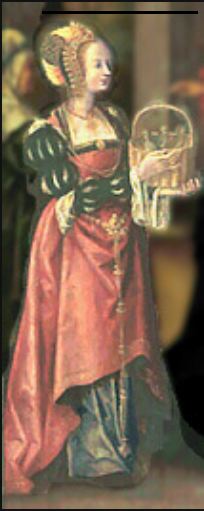
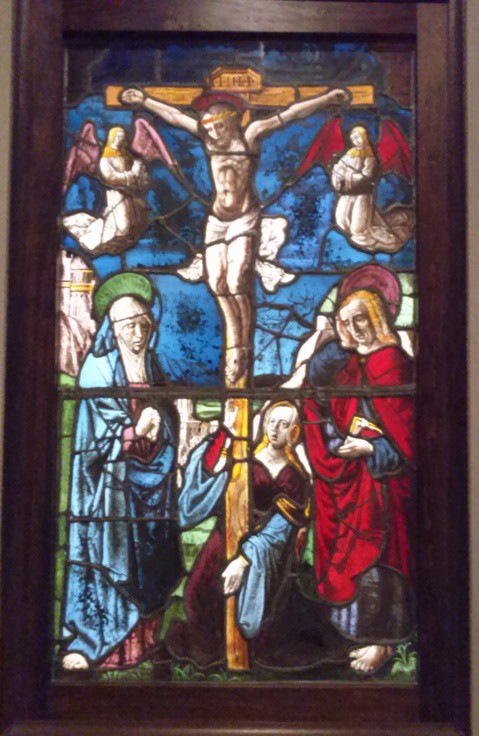
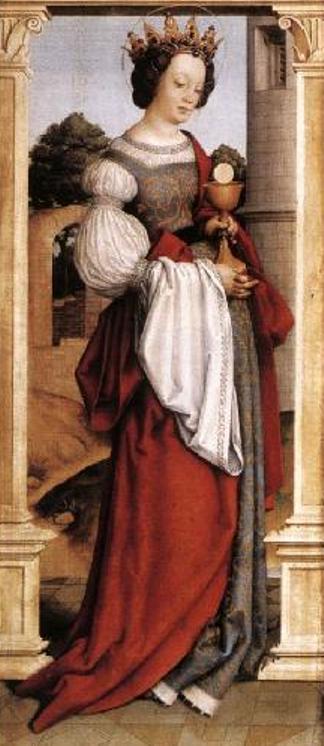
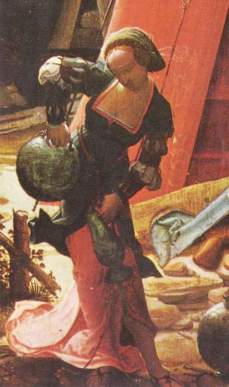


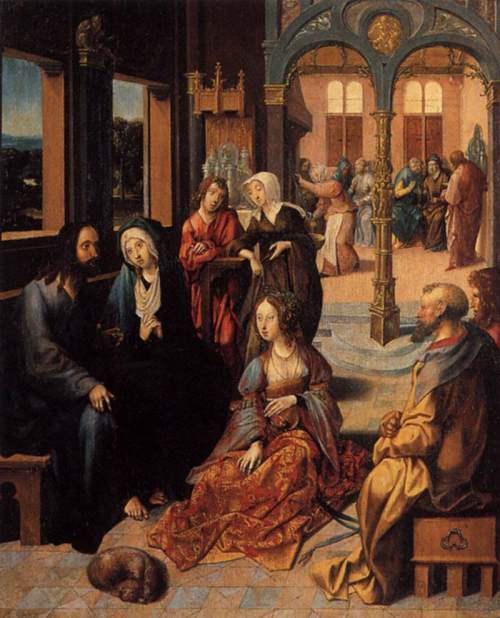
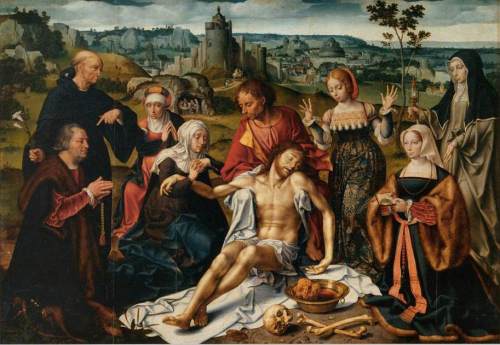
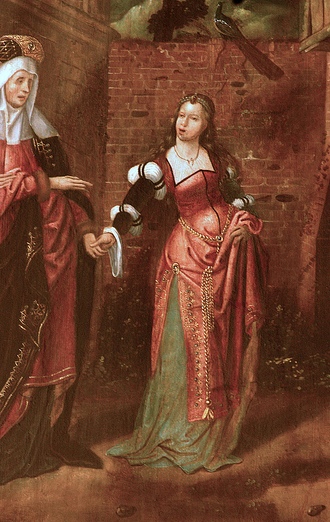
You must be logged in to post a comment.